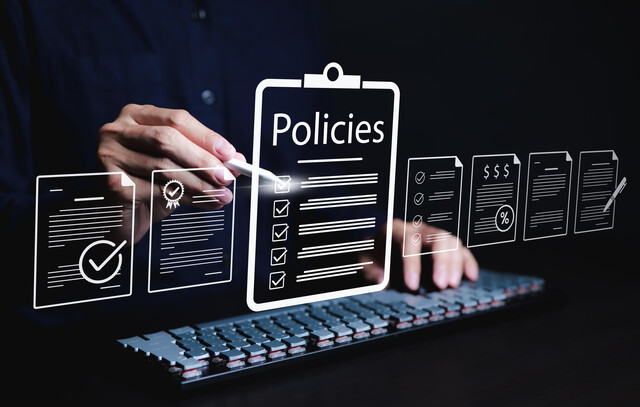Economics 201
Empower Your Future: Master the Art of Decision-Making with Economics 201

15 Hours average completion time
1.5 CEUs
16 Lessons
32 Exams & Assignments
7 Discussions
16 Videos
17 Reference Files
177 Articles
Mobile Friendly
Last Updated December 2025
Introduction to Real-world Economics: Bridging the Gap Between Theory and Practicality
Economics is deeply woven into the fabric of our everyday lives. Each day, we navigate decisions influenced by economic principles, from simple choices at the grocery store to complex financial strategies. This interconnectedness has only grown stronger over the years, positioning economics at the heart of our personal, societal, and global dynamics.
Course Overview
Our primary objective in this course is to provide you with a robust understanding of economics, ensuring you're well-equipped to appreciate its broad spectrum of applications. We've meticulously designed this curriculum to demystify the fundamental tenets of economics, introducing you to key concepts such as supply and demand dynamics, the role of interest rates, and the impacts of inflation.
While economics can often seem abstract and intimidating, our approach is grounded in real-world examples. We want to show you how deeply economics is entrenched in your daily life and the greater world. By understanding economic theories, you'll gain insights into the forces propelling our economies, recognize the confluence of statistics and economics in shaping financial forecasts, and leverage this knowledge for both personal and professional advantages.
From comprehending the rationale behind taxes to acquiring investment insights and anticipating market trends, our course presents a wealth of valuable insights.
Detailed Curriculum Outline
-
Lesson 1: Supply and Demand Model - Delve into the foundational concept that drives markets and pricing. Understand the factors that influence these dynamics.
-
Lesson 2: Supply and Demand Curves and Elasticity - Explore how changes in the marketplace can affect product prices and consumer demand.
-
Lesson 3: Marginalism - Unpack the importance of incremental changes and how they can have significant implications for decision-making in business and personal finance.
-
Lesson 4: Fiscal Policy and Monetary Policy - Discover how governments and central banks steer economies towards growth and stability.
-
Lesson 5: Economic Growth, Stimulus, and Stabilization - Examine the tools at the disposal of policymakers to foster economic expansion and mitigate recessions.
-
Lesson 6 & 7: Interest Rates - Dive deep into the world of interest rates, understanding their profound effect on borrowing, lending, and overall economic health.
-
Lesson 8: Inflation and Deflation - Decode the causes and consequences of rising and falling prices and their influence on purchasing power.
-
Lesson 9: Financial Markets and Investing - Navigate the intricacies of the financial world, gaining insights into smart investment strategies.
-
Lesson 10: Taxation Structures - Understand various tax systems, their implementation, and their impact on individuals and businesses.
-
Lesson 11: Public Finance - Explore how governments manage budgets, fund projects, and ensure fiscal responsibility.
-
Lesson 12: Revenue and Economic Forecasting - Learn the art and science of predicting future economic trends based on current data.
-
Lesson 13: Economic Indicators and Statistical or Probability Economics - Familiarize yourself with the key indicators that economists use to gauge the health of an economy.
-
Lesson 14: Marriage of Statistics and Econometrics - Understand the synergy between statistical techniques and economic data in making informed predictions.
-
Lesson 15: Economic Books and Additional Resources - Delve into seminal works that have shaped the field of economics and discover resources to continue your economic journey.
-
Lesson 16: Final Thoughts - Reflect on the learnings from the course and how you can apply these insights in real-world scenarios.
Why Enroll?
If you've ever wondered about the intricacies of our economic systems or aimed to make more informed financial decisions, this course offers an invaluable foundation. We believe in empowering our students with knowledge that translates to real-life advantages, making you more informed citizens, professionals, and decision-makers. Join us on this enlightening journey into the world of economics.
- Interpreting financial markets for investment strategies
- Evaluating market trends and economic indicators
- Forecasting economic conditions and trends
- Understanding the role of interest rates
- Analyzing supply and demand dynamics
- Assessing taxation and public finance systems
- Making informed personal and business financial decisions
- Critical thinking in economic decision-making
- Understanding fiscal and monetary policies
- Understanding global economic impacts
- Applying econometric and statistical techniques
-

Customer Service 101
-

Understanding Insurance Types
-

Call Center Management
-

How to Write Effective Policies and Procedures
-

Contract Law 101 - An Introduction
-

Persuasion Techniques
-

Writing Effective Emails in the Workplace
-

Customer Relationship Management
-

Community Development 101
-

Innovative Thinking Skills
-

Accounts Payable Training
-

Legal Terminology 101
-

Writing Help Course Bundle
-

Event Management Course Bundle
-

Mortgage Loan Processing
-

Tea Party Mastery: From Brew to Ambience
-

Emotional Intelligence
-

Telephone Skills and Quality Customer Service
-

Healthy Relationships
-

Journalism 101
-

Critical Thinking Skills
-

Confidence Building
-

Special Events Planning
-

Negotiation Skills
-

Debt Reduction